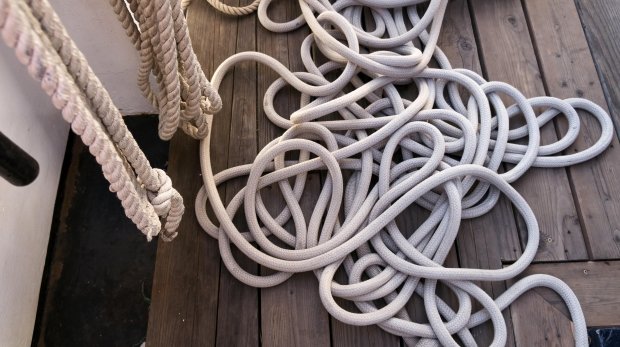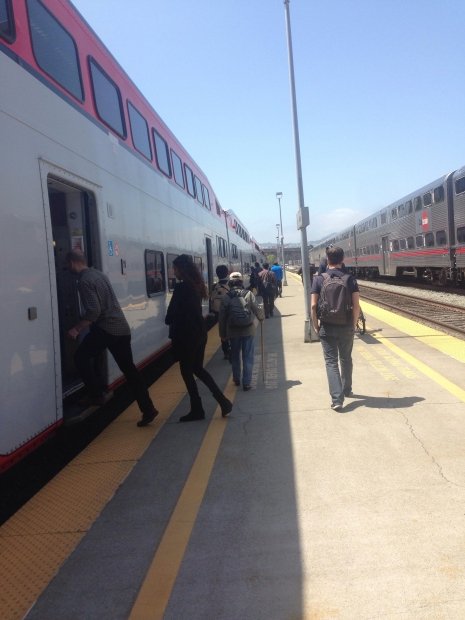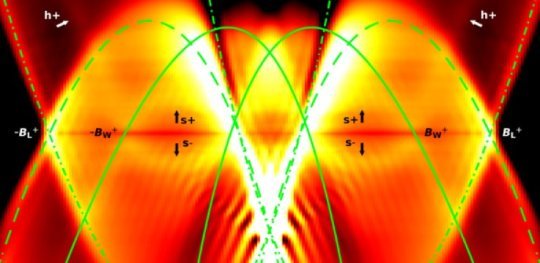Quantum effects of dimensional wires
Recently observations made about the interaction of electrons on a one-dimensional strings revealed previously unknown information about the way that certain particles act at a quantum level.
So what happened?
Scientists have compacted electrons along a one-dimensional quantum wire. The electrons on the wire were so tightly packed that they were observed as displaying quantum effects. When the electrons were packed together the shear amount of them and the way that they interacted with each other amplified their quantum effects to the point that they could actually be seen with greater accuracy and ease using tools to find the momentum of the electrons put into the wire.
What this can be simplified down to is with a visualization. Imagine that you had a train that is filled with many people. The people on the train are packed fairly tightly on the length of the center of the carriage. Now imagine that a person had to enter the train. The people that are closest to the entering passenger would have to be pushed a bit as to make room. When that happens the people pushed then push a little along their neighbors. This gives us a measurable wave of compression. The wave travels down the length of the train at a speed that is related to how they interact with each other and how hard they were pushed. Now by measuring the speed you can tell how they interact.
That same example is then applied to the way that electrons interact in the one dimensional quantum wire because the electrons all repel each other and are then not able to get past one and other, leaving a wave when one leaves or enters.
Other properties of electrons
The repulsion of the electrons is not their only property. They also have angular momentum or in another term, spin. The spin also interacts with the neighboring electrons setting of a wave too that flows energy through the wire at a different speed than wave created by the charge. Measuring the wavelength for the waves of these interactions is a field called tunneling spectroscopy.
Going further
At Cambridge University, researchers have made the next step in this research where the theory from the other one breaks down. The idea that they came up with and studied was like the original train car visualization but now the people in the train much more energy. They have so much energy actually that they actually make the person that they interact with fall over. Then those people fall onto more people that are further down the train car. This new idea is not as strong as the charge and spin waves and are therefore harder to pick up on. This lead to the thinking that the modes that are weaker should actually be the strongest in a very short quantum wire.
How?
The people at Cambridge accomplished such a task by making a way to make contact with 6,000 small lengths of metal. These strips of metal are used to make the quantum wires from the semiconductor element, which is gallium arsenide. In turn, this makes it required to have another bit of metal in the that is like a bridge between the metal.
Now, varying the voltage and magnetic field, tunneling from the wires all the way to an adjacent sheet of electrons is now able to be made out and recorded. This showed good evidence for the extra curve that was predicted and looked like an upside-down replica spin curve.
Why?
The information that was given from these tests will now be used to create more advanced technologies for quantum computers and in the study of the behavior of electrons.
Sources:
images.sciencedaily.com/2016/09/160915143401_1_540x360.jpg
cdn.morguefile.com/imageData/public/files/d/DMedina/06/l/1404133031801dx.jpg
cdn.morguefile.com/imageData/public/files/a/5demayo/05/l/1431111904tqtbr.jpg
www.particlecentral.com/strings_page.html



The real source of your article is coming from this website. It would be fair to cite it at the end of your post. There is nothing wrong in summarizing what you understood from the original article, but it is always important to cite his or her sources.
Forgive me if this is a stupid question...How were the electrons "packed" onto the wire? It was my understanding that metals behave like an electron sea, where when one more electron is introduced, another will flow out the other side. Perhaps this is too simplistic? I find this fascinating.
As pointed out by @lemouth, please cite your sources. Appropriate citation is essential to good scientific discussion. We all use materials written and thought up by others when talking about science, its a field where we all stand on the shoulders of giants. No shame in reporting and citing information.
I am not exactly sure but I would assume it would be just like hooking a battery to some other piece of equipment, or perhaps by firing electrons in a vacuum environment at the apparatus.